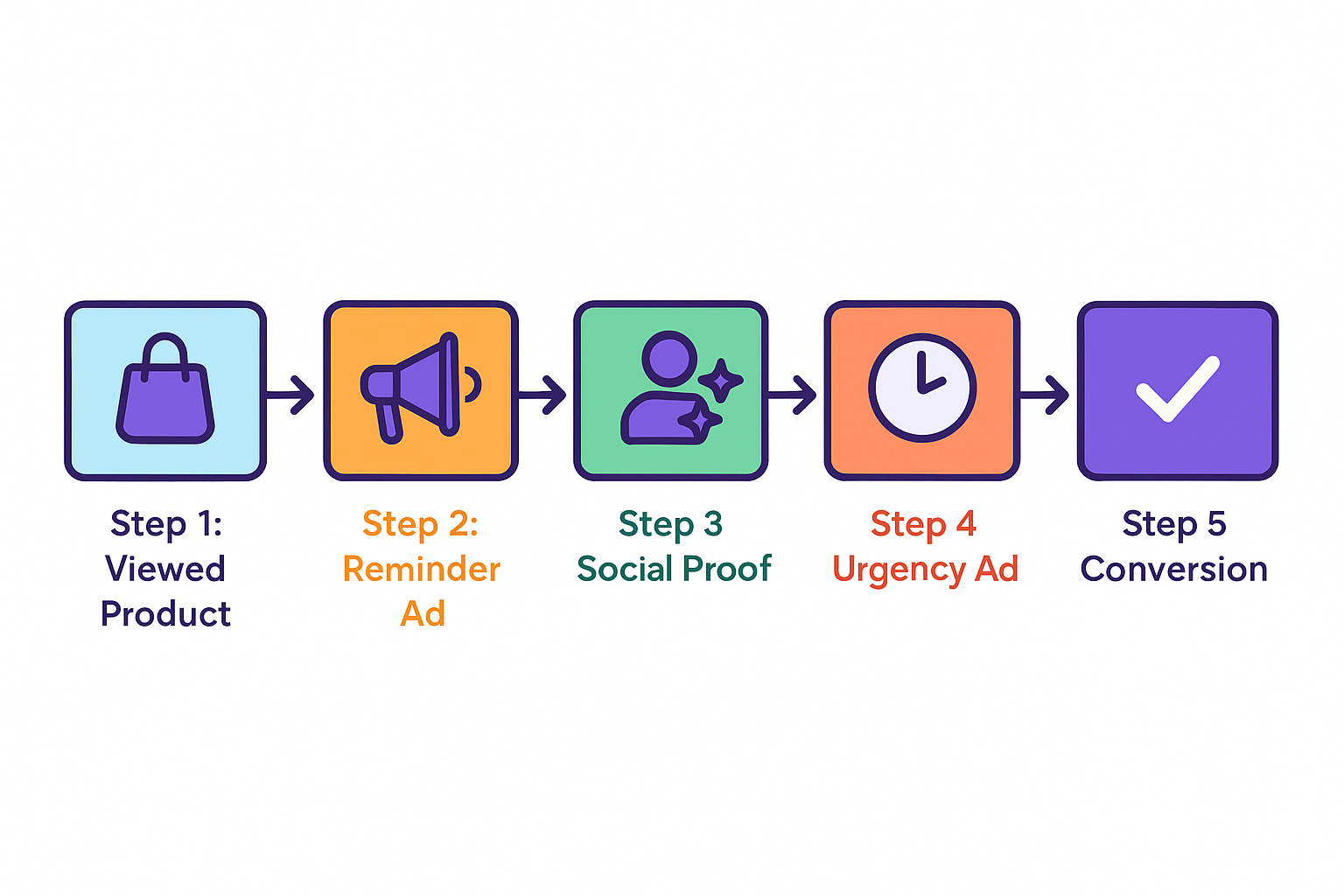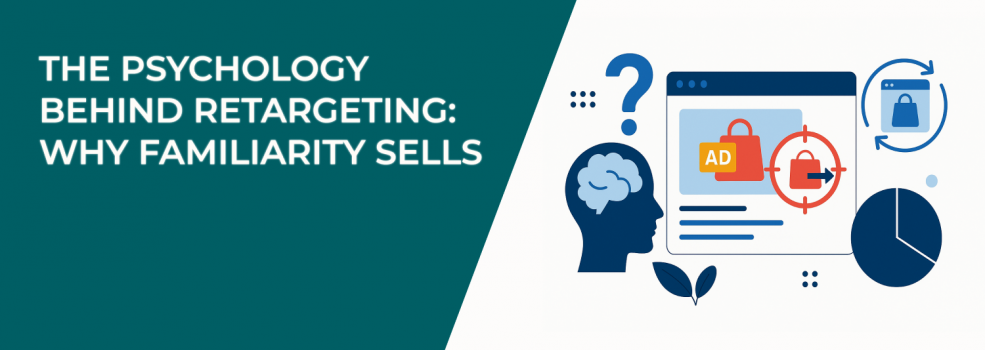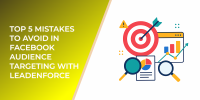Ever feel like that product you clicked on is stalking you? You're not wrong. Retargeting ads are everywhere. And they work insanely well.
The reason is simple: our brains crave the familiar. Retargeting taps into that bias — not by tricking users, but by reinforcing what they already showed interest in.
Let’s look at the psychology behind it and how to build retargeting campaigns that convert without annoying your audience.
1. Familiarity Feels Safe
Humans are naturally drawn to what we already know. It’s called the mere exposure effect — the more often we encounter something, the more positively we feel about it.
That’s why brands run the same logo, colors, and message over and over.
What to do in your retargeting ads:
-
Use visual consistency: Stick with the same fonts, color schemes, and logo placement you use in your primary ads and landing pages. This primes recognition.
-
Repeat your core offer: Don’t change your CTA too early. If your cold audience saw "Try Risk-Free for 14 Days," keep that in your retargeting unless your funnel requires a step change.
-
Anchor to one message: Pick a positioning angle (e.g., "Saves you 10+ hours a week") and reinforce it in every ad variation.
The more familiar your brand feels, the less friction users will feel clicking through again.
Want to go even deeper into how to get this right? Here’s how to set up retargeting properly on Facebook.
2. People Don’t Buy on the First Visit
Most users don’t convert right away. Some are distracted. Some want to research. Some just need time.

This is where retargeting shines. You're talking to a warm audience — people who already know you.
How to structure your retargeting sequence:
-
Stage 1: Reminder ad — Show the product or offer they viewed. Keep it visual and clear.
-
Stage 2: Social proof ad — Use testimonials, user reviews, or case study quotes. Reassure them they’re making a smart decision.
-
Stage 3: Urgency trigger — Try messaging like "Only 3 left in stock" or "Discount ends tonight."
-
Stage 4 (optional): Objection-buster — Address the hesitations they might have ("Worried about the fit? Free returns, no questions asked.")
You’re not repeating the same message — you’re meeting them at different points in their decision-making process.
Want more tactics? Explore how to win back abandoned carts using Facebook retargeting.
3. Our Brains Are Lazy. We Need Reminders.
Even if people liked your offer, they probably forgot about it 10 minutes later. That doesn’t mean they’re not interested — just distracted.
Retargeting ads give the brain a gentle tap. "Remember this? You liked it."
What to include in reminder-style retargeting ads:
-
The exact product image they viewed.
-
Personalized copy ("Still deciding on these?").
-
Minimal friction: direct link to product page or pre-filled checkout if possible.
This small nudge can lead to big revenue, especially when your product is something that solves a specific pain.
Related: If you’re struggling to get those conversions over the finish line, read Facebook Ads Not Converting: How To Fix It.
4. Brand Imprinting Happens Without Clicks
Here’s what most marketers forget: retargeting doesn’t have to drive an immediate click to work.
Just being seen again increases brand recall.
How to imprint without annoying:
-
Use frequency caps — Set limits on how often the same user sees your ad per day.
-
Rotate visuals and formats — Don’t serve the exact same creative every time. Use carousels, Reels-style videos, and story placements.
-
Use subtle logo placement — Even if they don’t click, they’ll recognize your name later.
This is especially useful if you're running full-funnel campaigns. A retargeting view today can drive a search or branded click next week.
If you want to understand how audience strategy ties into this, read Facebook Ad Targeting 101.
5. Timing & Emotion Multiply Impact
Retargeting isn’t just about showing up again — it’s about showing up when it counts.
Maybe they weren’t ready to buy yesterday. But today? They had a bad day. Or a breakthrough. Or a moment of pain your product solves.
Ways to align timing and emotion:
-
Use dynamic creative: Tools like Meta's Dynamic Ads can adjust product imagery and copy based on prior behavior.
-
Tap into emotional angles:
-
For skincare: “Your skin deserves a second chance.”
-
For SaaS: “Still wasting hours in spreadsheets?”
-
For DTC: “Because you deserve better than generic.”
-
Emotion improves memory. If you're not testing emotional ads yet, here's a shortcut: The Best AI Text and Image Generators.
6. Frequency Fatigue Is Real (and Fixable)
Yes, there is such a thing as showing up too much. Retargeting fatigue can kill performance fast.
How to avoid burning out your audience:
-
Set frequency caps by ad set — Don't show the same ad 7 times a day. 3-5 over a few days is a healthier limit.
-
Rotate creatives every 5-7 days — Change visuals, not just copy. Even minor tweaks reset attention.
-
Segment by time window — Treat users who visited yesterday differently from those who visited two weeks ago.
Still stuck in the "Learning Limited" loop? That could be hurting your retargeting performance. Learn how to fix it in Why You See ‘Ad Set May Get Zero’ on Facebook.
Final Thoughts
If someone added to cart, viewed your product, or clicked your ad — they're already interested. Retargeting just helps them finish the journey.
But great retargeting isn’t just a repeat ad. It’s a sequence. A story. A tap on the shoulder at the right moment with the right message.
So next time you’re planning your campaigns, don’t just focus on cold targeting. Get strategic about who you bring back — and

